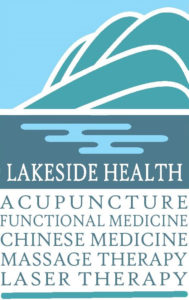Question:
Do you recommend topical pain relievers? How do I choose from so many ointments and patches?
Dr. Donna Rasplica, B.C. Reg. Doctor of Traditional Chinese Medicine, loves how traditional herbal medicines and therapies can be matched to the individual. She specializes in treating pain, chronic diseases, and problems of aging.
ANSWER:
Yes, there’s HUGE choice on the store shelves and everyone seems to have a favorite. How do you make an informed choice? And are these ointments, sprays or patches worth using at all? Let’s simplify things!
Whether spray, cream, roll on, or patch (and no matter the advertising hype!) three naturally occurring ingredients are typical and have been used worldwide for 100s of years: menthol, camphor, and capsaicin.
Menthol is the cool substance in peppermint oil; camphor is a cool substance derived from an Asian tree, turpentine oil, or rosemary; capsaicin is the hot substance in chili peppers. All decrease the sensation of pain when applied to skin by means of ‘counter irritation’ – by cancelling out the pain signal before it reaches the brain. They do increase local circulation but primarily they act by simple distraction but do little to help heal injured tissue. Patches using iron particles that react with air to produce counter-irritant heat belong in this category also and have been heavily advertised on TV.
The American College of Rheumatology recommends counter-irritant products for arthritis as a ‘front line’ treatment before expensive and potentially harmful prescription pain killers and anti-inflammatories. Even OTC topical nonsteroidals such as diclofenac carry warnings regarding the risk of liver damage. But cautions for counter-irritants are in order too. Some of these products contain methyl salicylate (aspirin-like) which shouldn’t be used by people on anticoagulant drugs. And many contain preservatives such as parabens, a controversial and potentially dangerous hormone mimicking chemical.
Another category is homeopathic topical creams. All contain arnica montana, a mountain flower which does seem to have tissue repair value, helping to resolve bruises and fresh injuries rapidly. Use caution if you’re allergic to plants in the daisy family.
I’m impressed by a simple product called MSM. It’s a benign by-product of the pulping process and therefore inexpensive but is anti-inflammatory and analgesic. One of its metabolites is actually good for your liver. Because it breaks down crosslinking between collagen fibers it can reduce scarring. In a particularly smelly form it’s a popular horse liniment!
I can call my favorite topicals true remedies because they contain medicinal herbs that are transported through the skin hastening healing for acute or chronic conditions. None contain synthetic or toxic ingredients.
- My favorite Ben Gay alternative: Po Sum On Medicated Oil (translation “Protect the Heart’s Peace”) inexpensive and made by steam distillation of medicinal herbs. It contains the counter-irritant, peppermint oil, but additional ingredients promote tissue regeneration.
- For more serious tendon, ligament or bone injuries: Zheng Gu Shui (“bone knitting water”) contains a small amount of menthol and camphor plus 8 Chinese herbs from the ancient first-aid traditions of martial arts.
- The most effective and economical pain patch ever made: 701 Medicated Plaster contains time tested martial arts herbs that rapidly reduce pain and help heal damaged tissues. You get a 13 foot long roll, not just a few patches! You can easily cut the exact size you need. It does have a strong but pleasant (in my opinion) medicinal smell.
Be careful with any topical product. Only apply them to intact skin! Don’t cover with bandages or apply heat. Test on a small area first as allergies and sensitivities are unpredictable. In 2012, the FDA issued a safety caution about rare cases of mild to severe chemical skin burns from products that contain greater than 3% menthol or 10% methyl salicylate.



